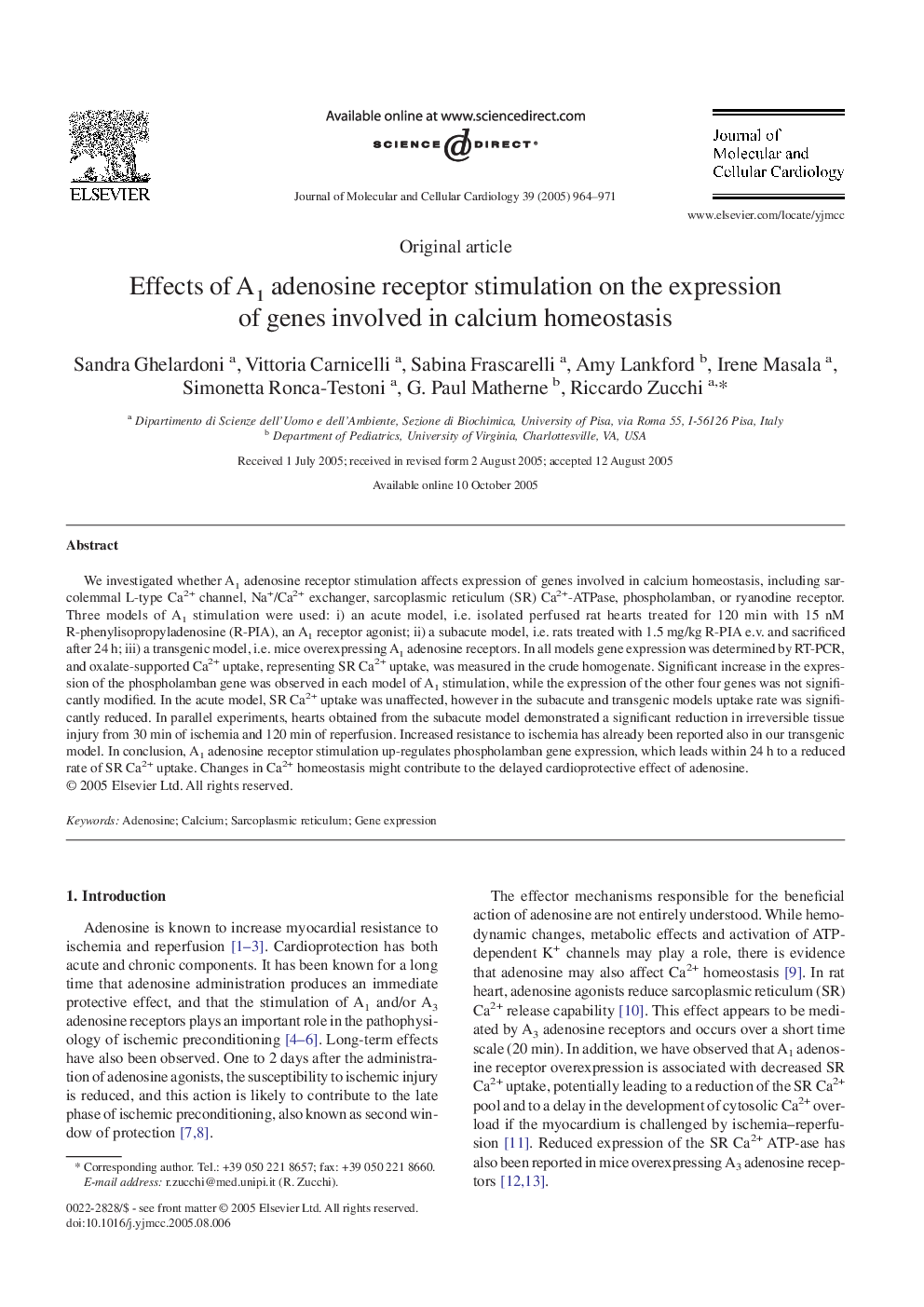| Article ID | Journal | Published Year | Pages | File Type |
|---|---|---|---|---|
| 10954303 | Journal of Molecular and Cellular Cardiology | 2005 | 8 Pages |
Abstract
We investigated whether A1 adenosine receptor stimulation affects expression of genes involved in calcium homeostasis, including sarcolemmal L-type Ca2+ channel, Na+/Ca2+ exchanger, sarcoplasmic reticulum (SR) Ca2+-ATPase, phospholamban, or ryanodine receptor. Three models of A1 stimulation were used: i) an acute model, i.e. isolated perfused rat hearts treated for 120Â min with 15Â nM R-phenylisopropyladenosine (R-PIA), an A1 receptor agonist; ii) a subacute model, i.e. rats treated with 1.5Â mg/kg R-PIA e.v. and sacrificed after 24Â h; iii) a transgenic model, i.e. mice overexpressing A1 adenosine receptors. In all models gene expression was determined by RT-PCR, and oxalate-supported Ca2+ uptake, representing SR Ca2+ uptake, was measured in the crude homogenate. Significant increase in the expression of the phospholamban gene was observed in each model of A1 stimulation, while the expression of the other four genes was not significantly modified. In the acute model, SR Ca2+ uptake was unaffected, however in the subacute and transgenic models uptake rate was significantly reduced. In parallel experiments, hearts obtained from the subacute model demonstrated a significant reduction in irreversible tissue injury from 30Â min of ischemia and 120Â min of reperfusion. Increased resistance to ischemia has already been reported also in our transgenic model. In conclusion, A1 adenosine receptor stimulation up-regulates phospholamban gene expression, which leads within 24Â h to a reduced rate of SR Ca2+ uptake. Changes in Ca2+ homeostasis might contribute to the delayed cardioprotective effect of adenosine.
Related Topics
Life Sciences
Biochemistry, Genetics and Molecular Biology
Cell Biology
Authors
Sandra Ghelardoni, Vittoria Carnicelli, Sabina Frascarelli, Amy Lankford, Irene Masala, Simonetta Ronca-Testoni, G. Paul Matherne, Riccardo Zucchi,
